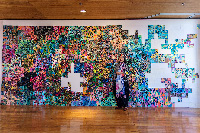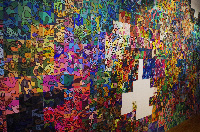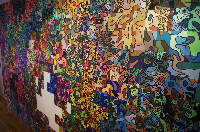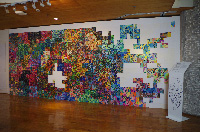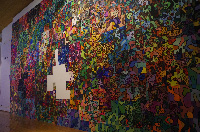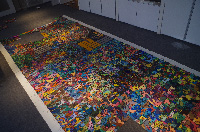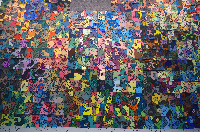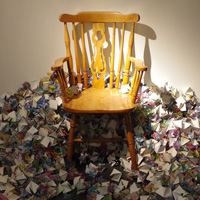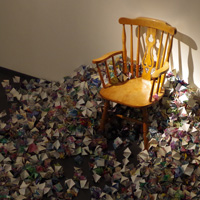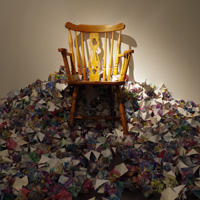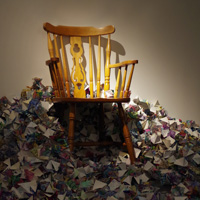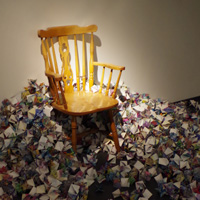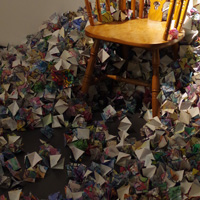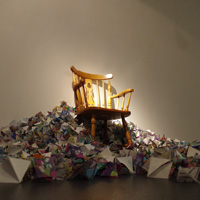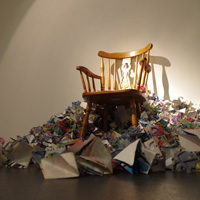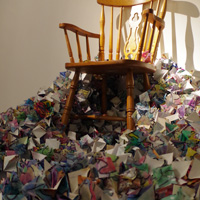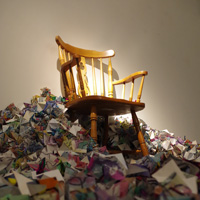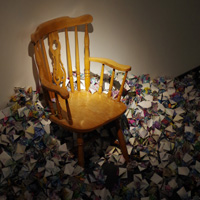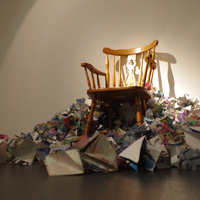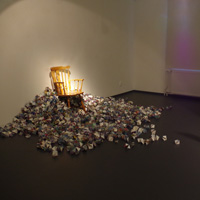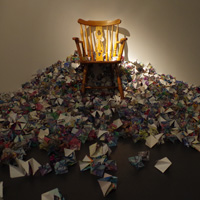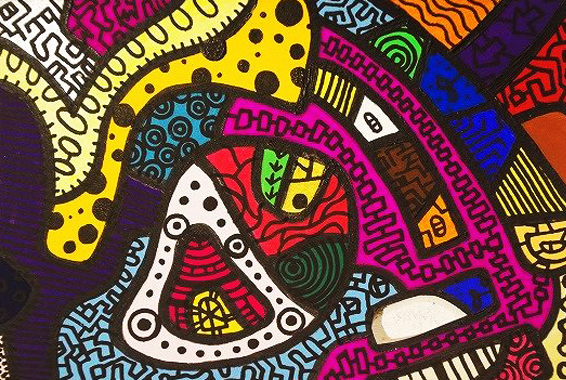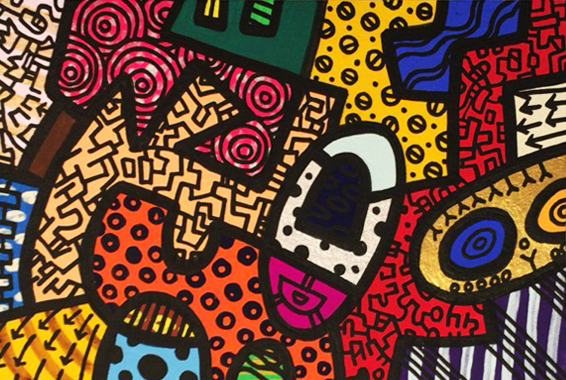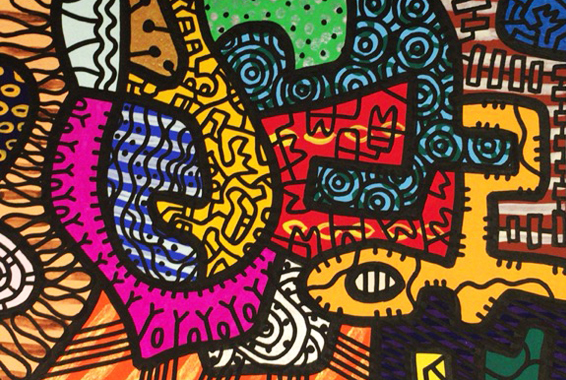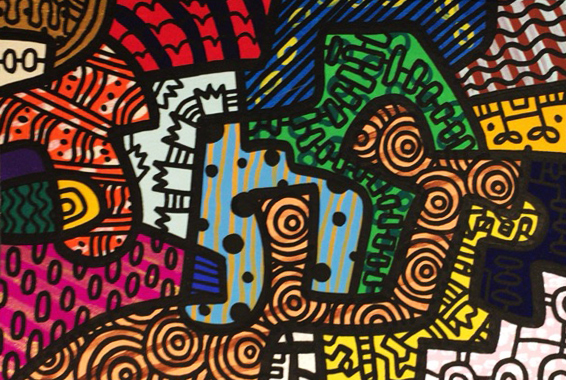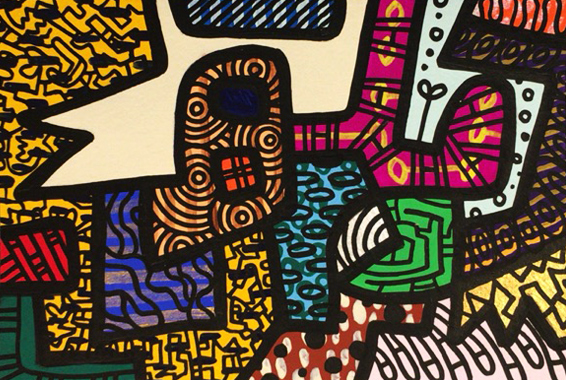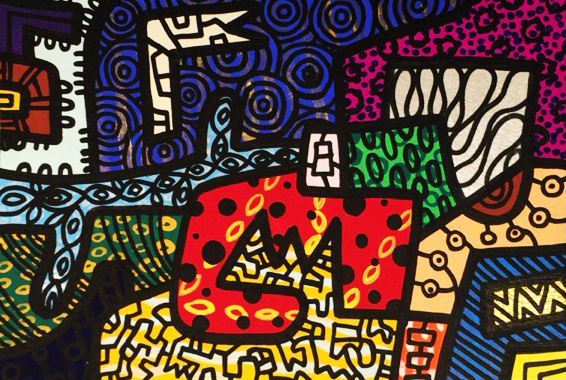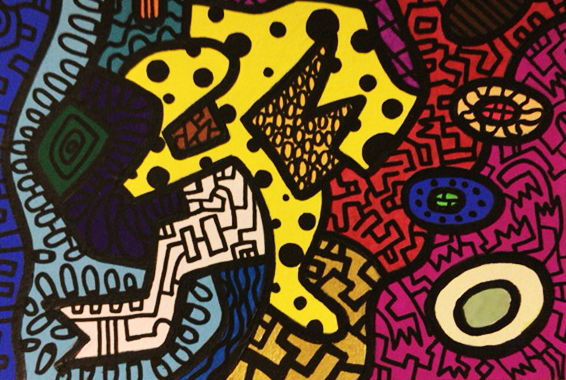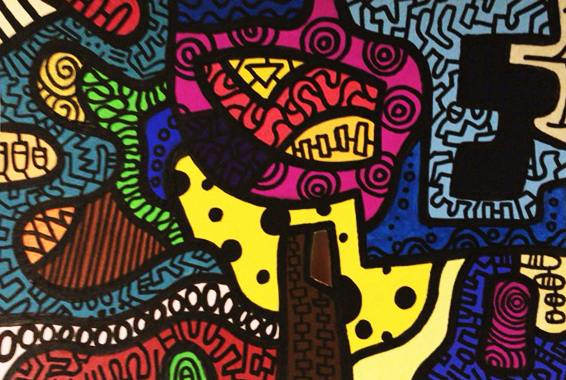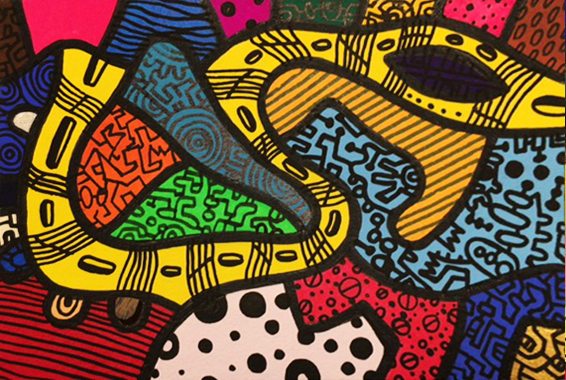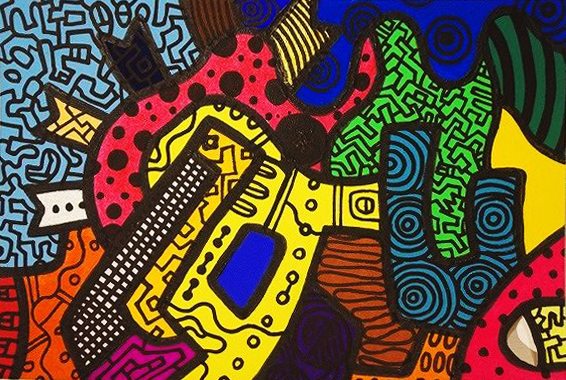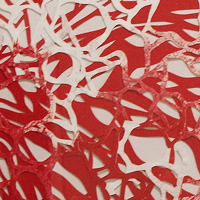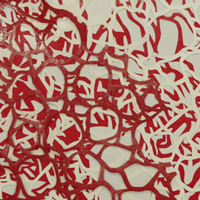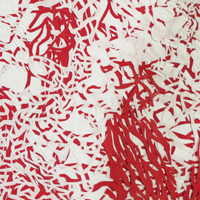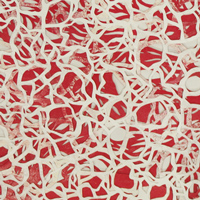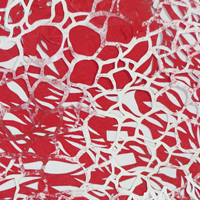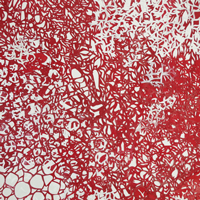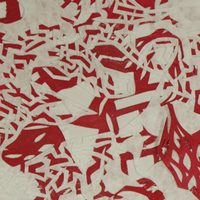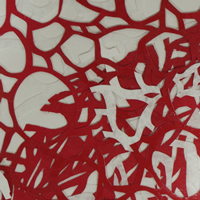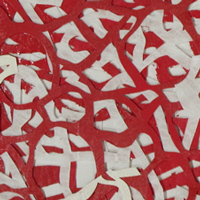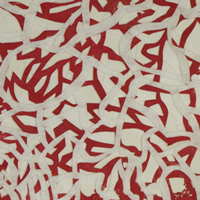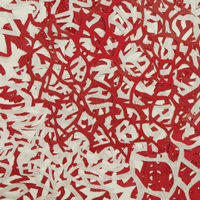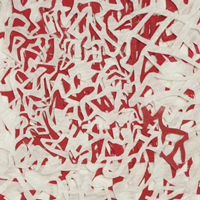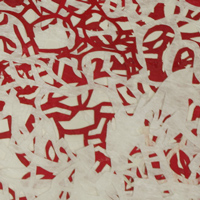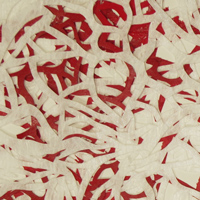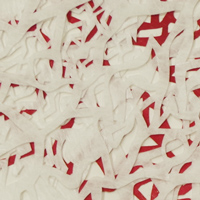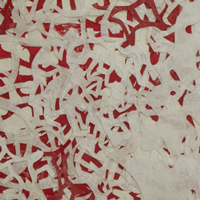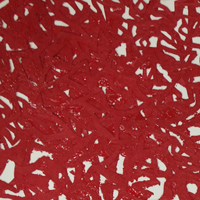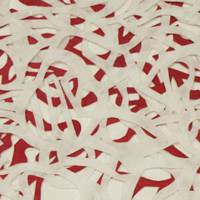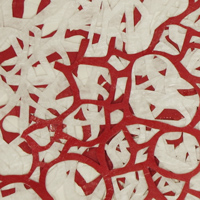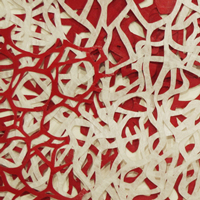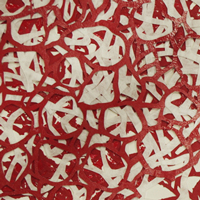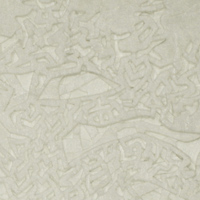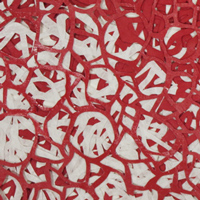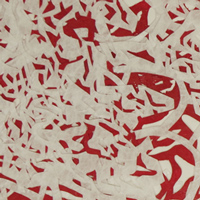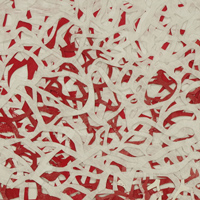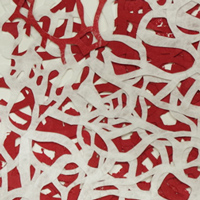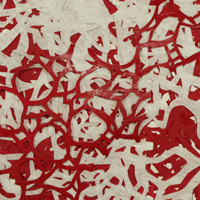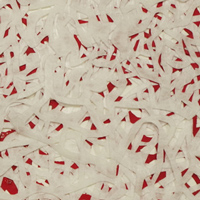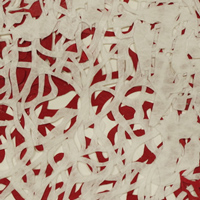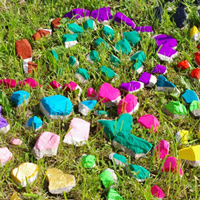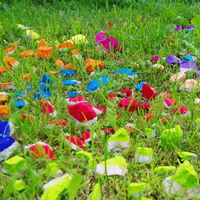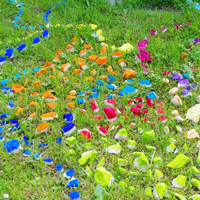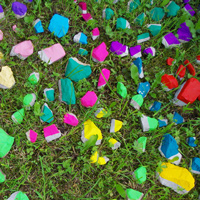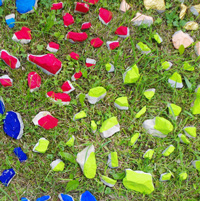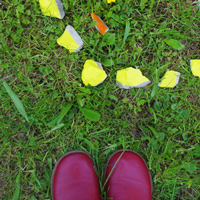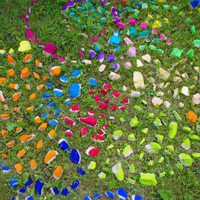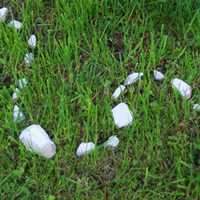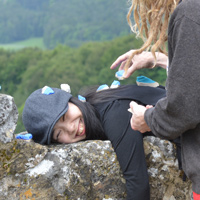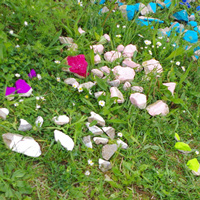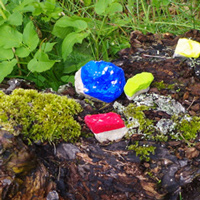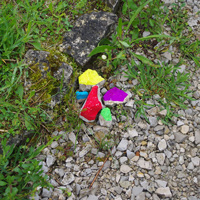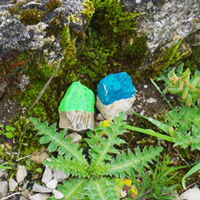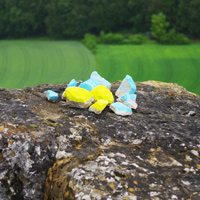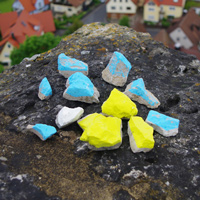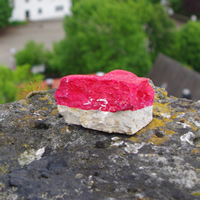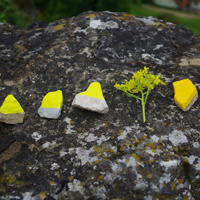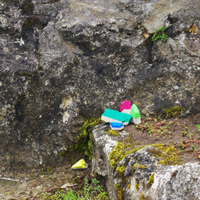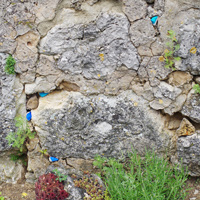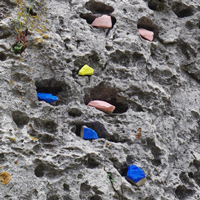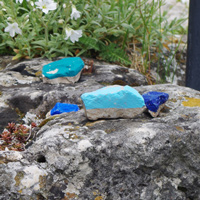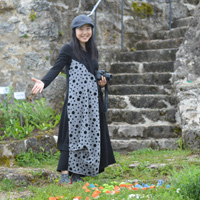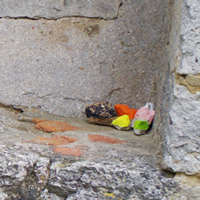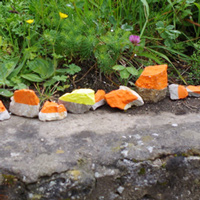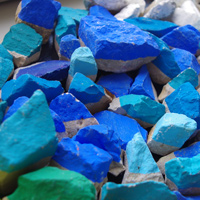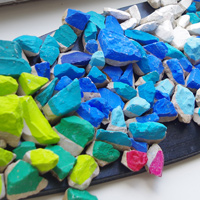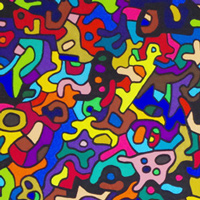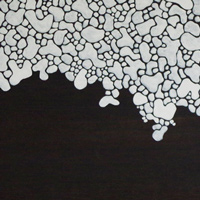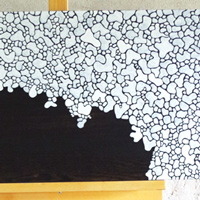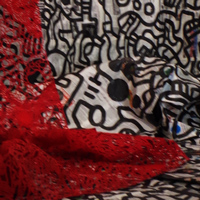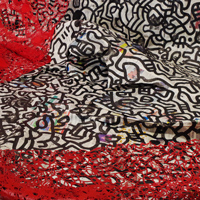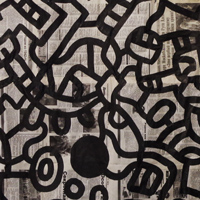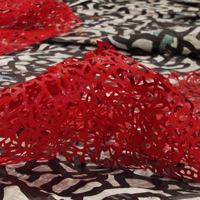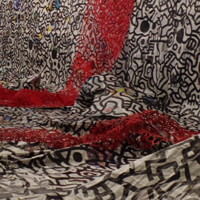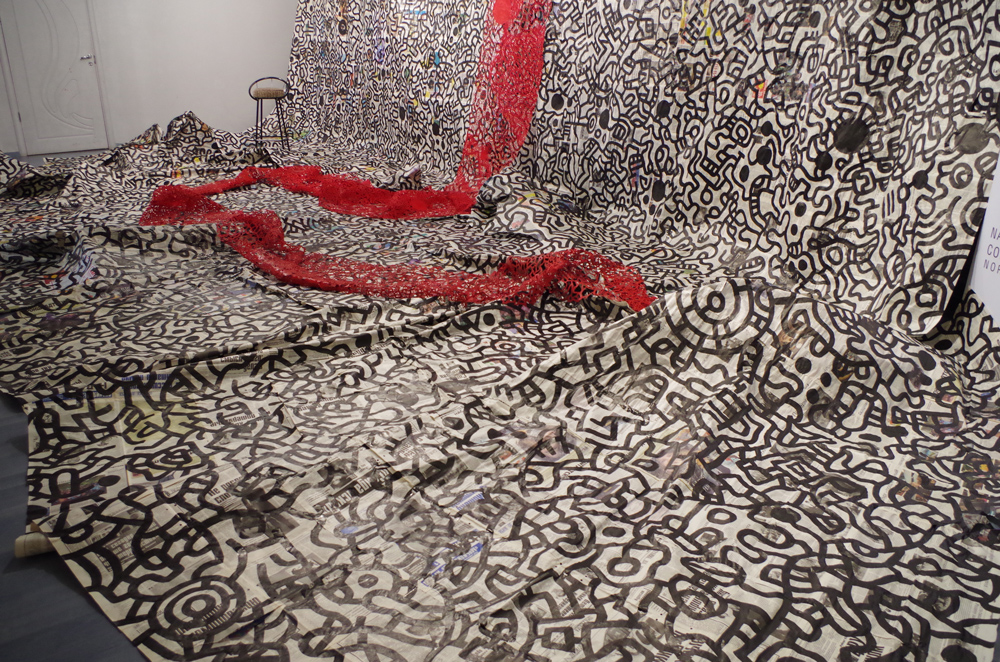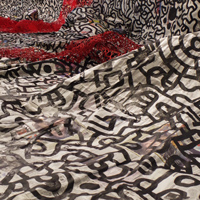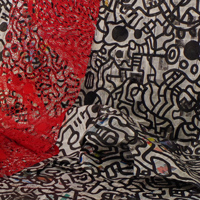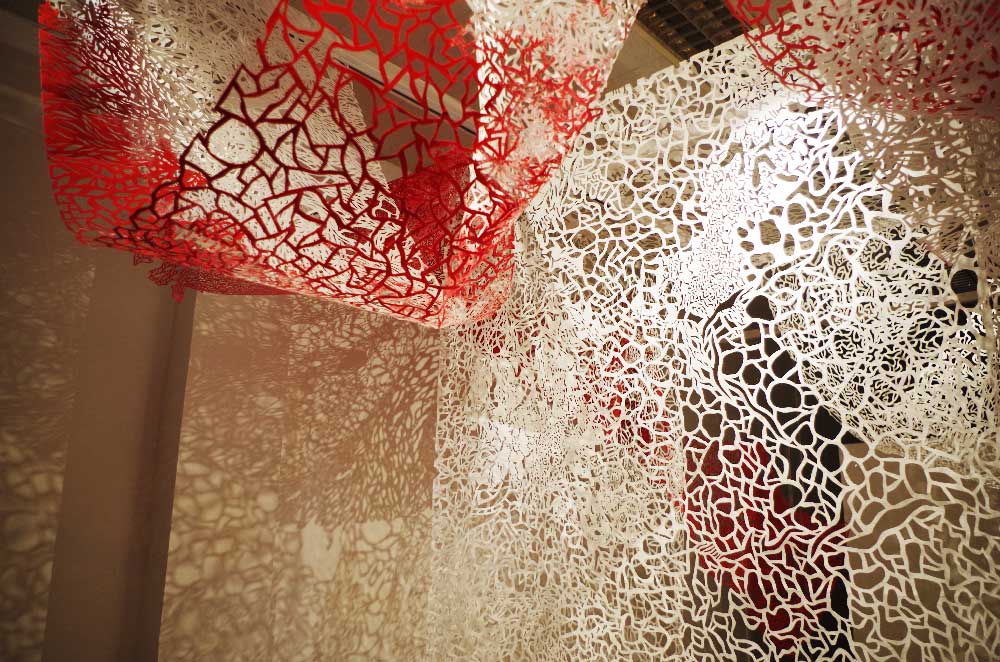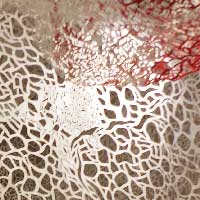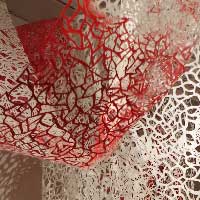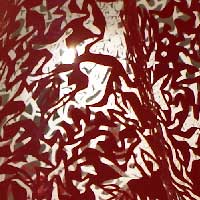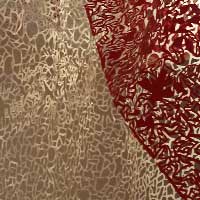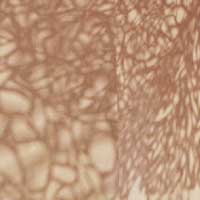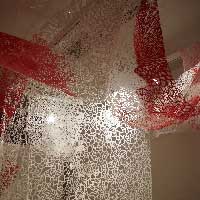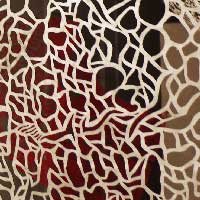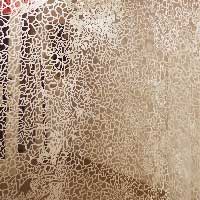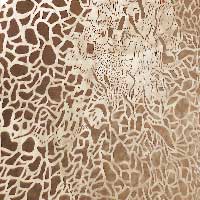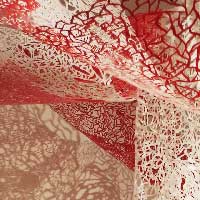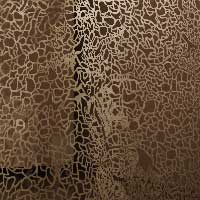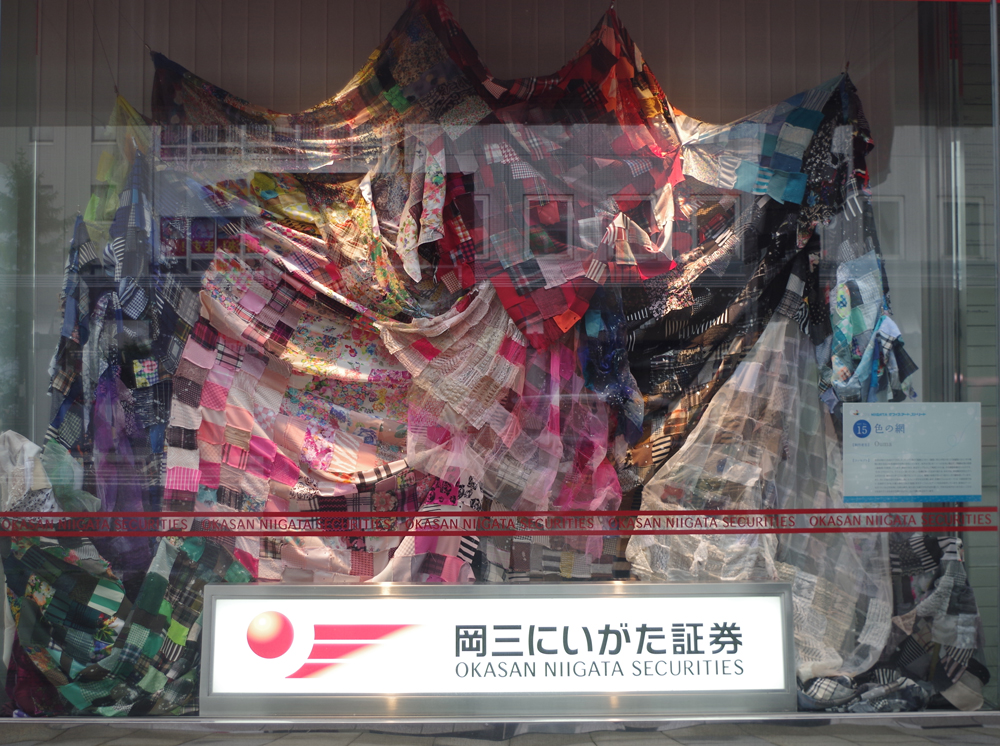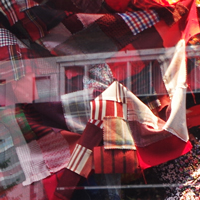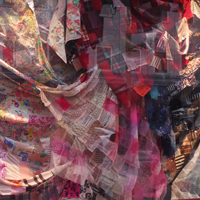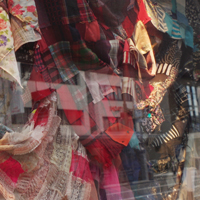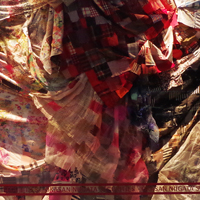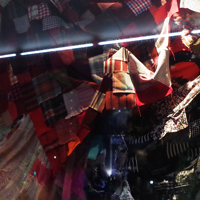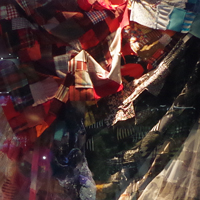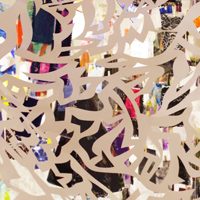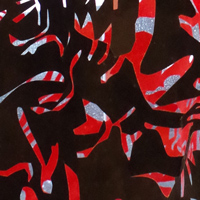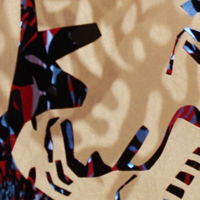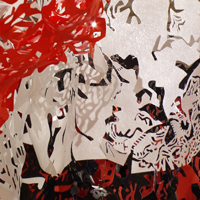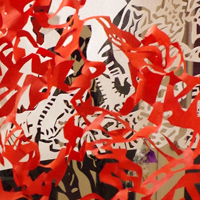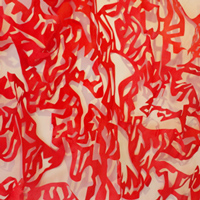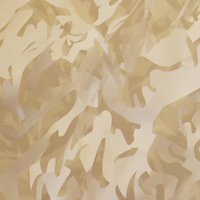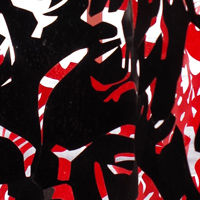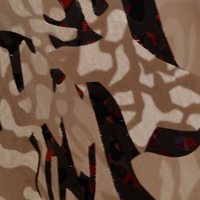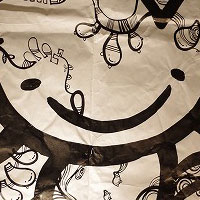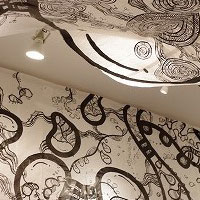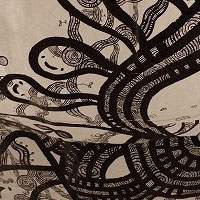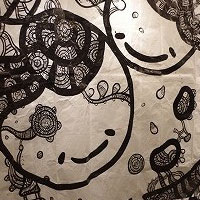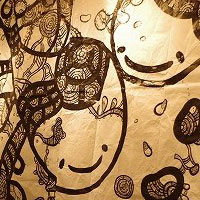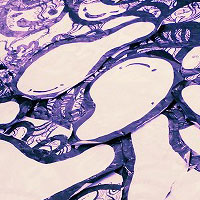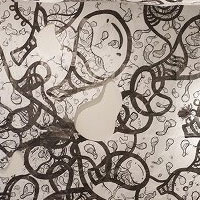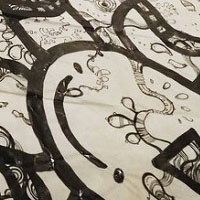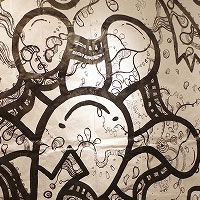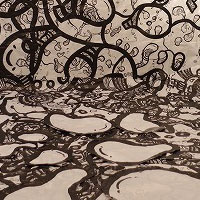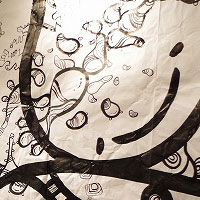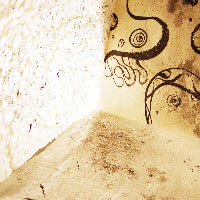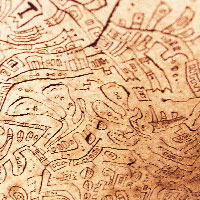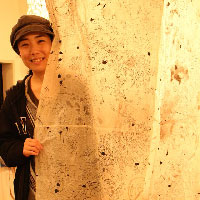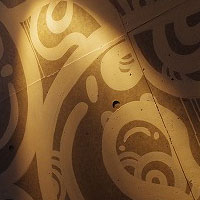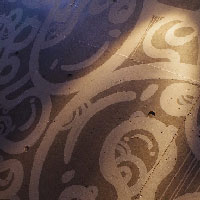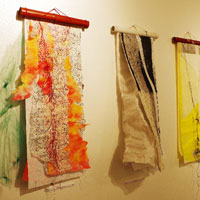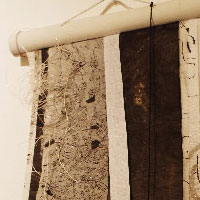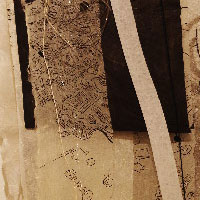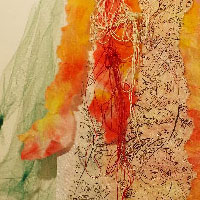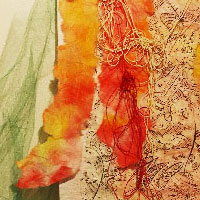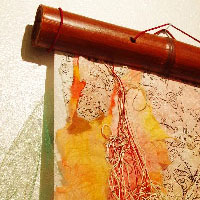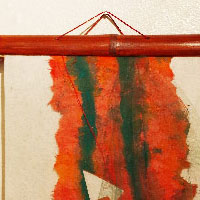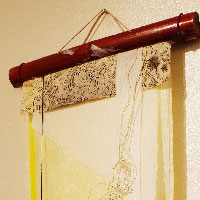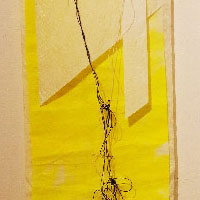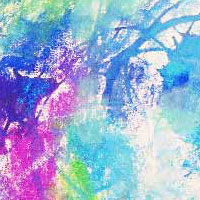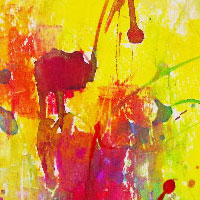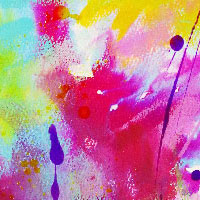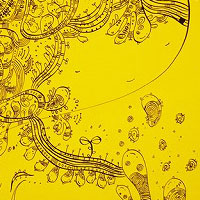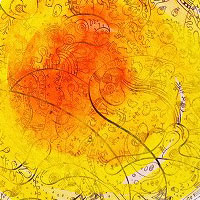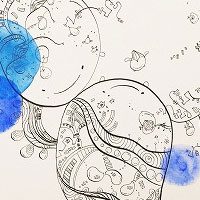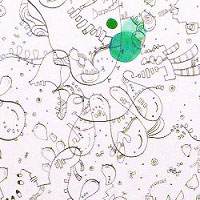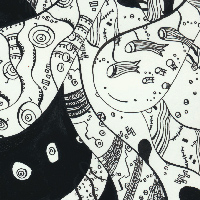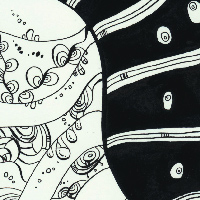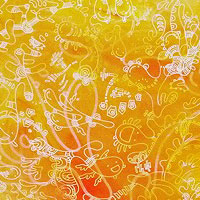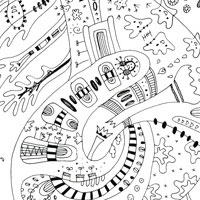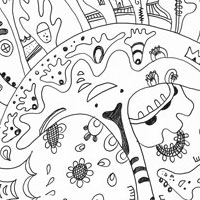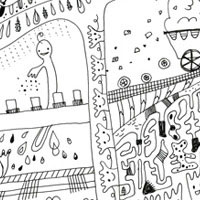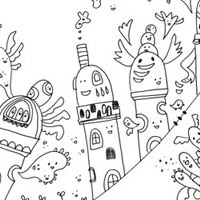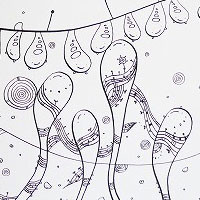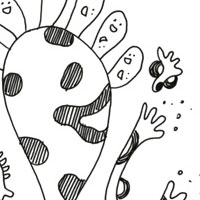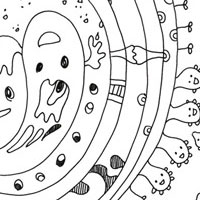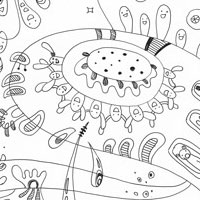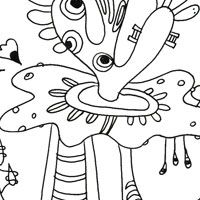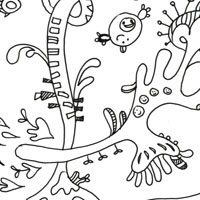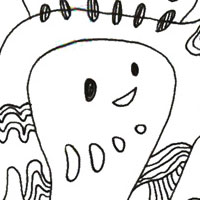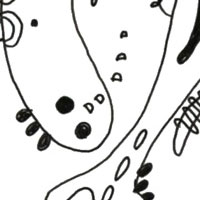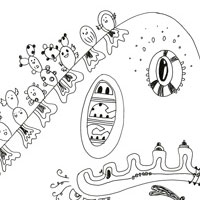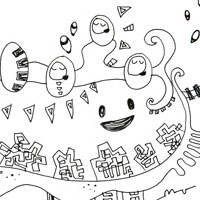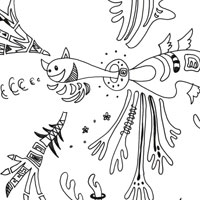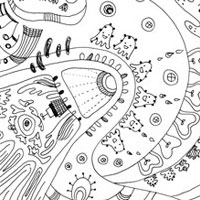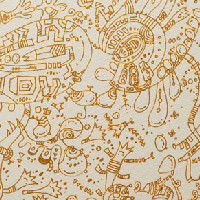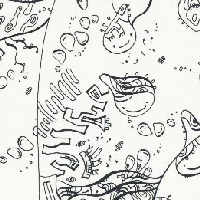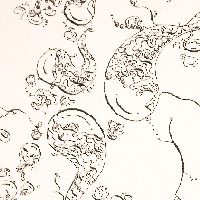系統樹 / Phylogenetic Tree

Acrylic on paper, 148×100mm(5.8×3.94inch) each 2017-, Current size / 1628×1000mm(64.1×39.4inch)
(作品全体も1つの作品として定義、サイズ可変)2017 -
ポストカードサイズの紙1枚を1つの細胞と見立てて制作する増殖的ペインティングシリーズ。隣り合う作品と線がつながり、1ピースが1つの巨大な作品を構成する一部となっています。すでに一部の作品は誰かの手に渡っており、作者であるOuma自身も、その全体像を一度に見ることができません。1つの小さなピースから、隣り合う「誰か」のことを想像する楽しみもあります。太い線で分けられた区画の色はすべて違う色で塗られており、また、数枚のグループをFamily(科)と見立て、一度に制作しています。同じ「科」の作品は似たようなトーンとなっていますが、隣り合っていても「科」が違う作品は全く違う色となっています。
1つの作品から自らと全体との関係性を想起させます。
This work, consisting of several pieces, projects an open-end one in which creating and missing co-progress. The creator Ouma herself cannot any more watch the whole work at a time. Being an ex veterinarian, Ouma is creating “cellular” art, where every tiny work piece represents a cell in the project as well: each tiny piece of the work is connected to the neighboring ones, making all of them constitute one huge work.
The World Ⅳ
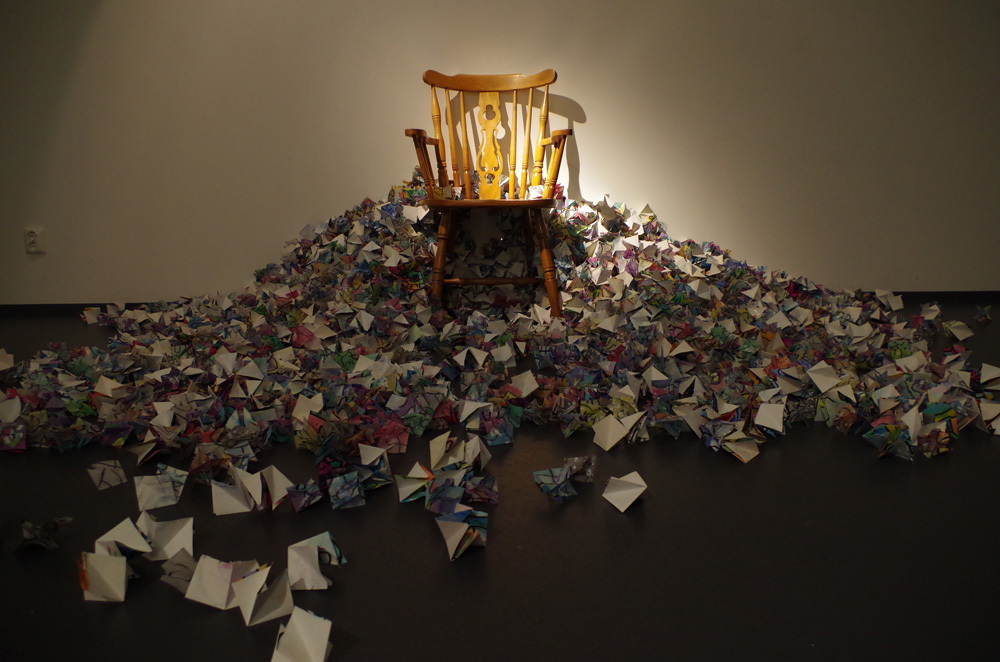
Acrylic and pen on Finnish and Japanese paper, size changeable, 2017
フィンランドと日本の紙を使った作品です。もともとは一つの円環状につながった作品を細切れにして積み上げています。そのため、すべてのピースがつながっています。
この作品は「盗む」ことが許されています。盗むというのはつまり、誰にも見つからないように、誰かのものを密かに入手することです。盗まれた作品は作家のものなのか、盗んだ人の物なのか。
私たちは道端の落ち葉を拾って持ち帰ることができる。床に落ちている誰かの髪の毛を拾って帰ることができる。
私たちはどこまでを所有していてどこまでを所有していないのでしょう。また、所有する価値があるものとはなんでしょう。
誰かが作品の一部を盗んだとしたら、すべてがつながっているこの作品の「完全性」は失われます。しかし、作品が盗まれたかどうか、どの程度減ったかは、私たちは知ることができません。
盗まれた作品の見映えは、盗まれていない時とほぼ変わらないでしょう。
果たしてその価値は下がるのでしょうか?
本作は「所有」と「価値」とは何か、あなたに問いかけます。
This work is made of papers from Finland and Japanese.
Original work is the circle. I cut it up small pieces and piled up.
All pieces are connecting with lines.
You are allowed to steal these small pieces.
In short, you can get them with keeping it a secret from others.
I wonder who is the owner of the works which they stole.
We can take back the leaves on the ground.
We can pick somebody's hairs on the floor and bring them back without asking.
I wonder how far we can possess or can't.
and What is the valuable thing which we can own so long.
If somebody steal them, the perfection of this work will be losed.
However, we don't know if somebody really stole them or how much it'll be decreasing.
There are no difference of appearance between the stolen work and not stolen work.
The work will fall in value or not, after they stole some.
This work challenges you what is the ownership and the value.
Evolution Painting Series
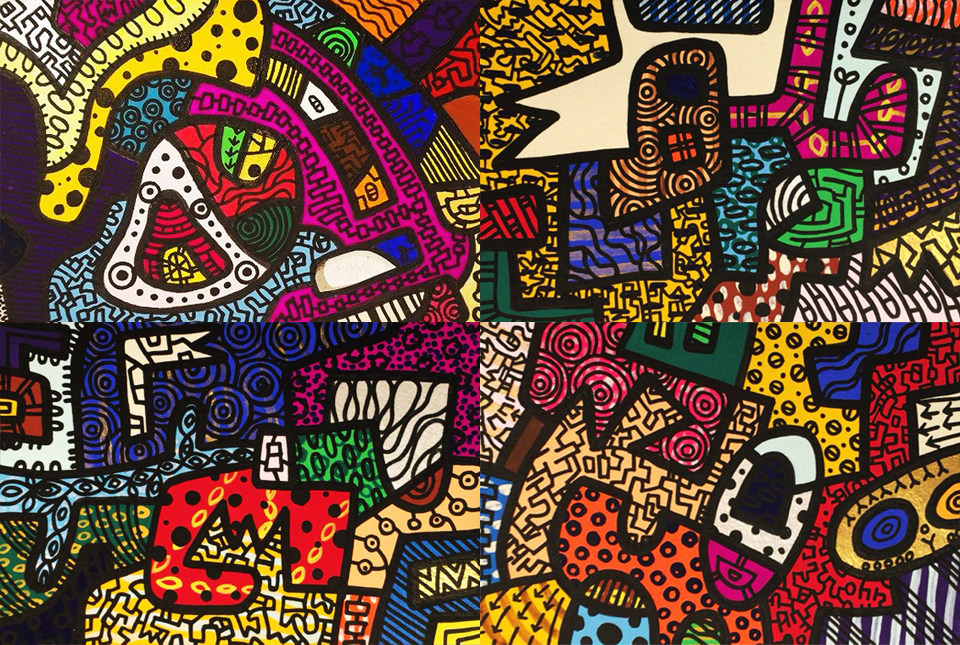
This series are developing until somebody buy them. If somebody buy it, it means that the works reached the climax. I, artist have to change the works even if I love it until then. Only people without artist herself can decide the end of the works.
Cutting Paper Series

Stones and YOU
Acrylic on stones, 2016, Changeable position

Wood and YOU
Acrylic on board, 2016, h45cm(17.7inch)×w90.5cm(35.6inch)×d1cm(0.39inch)
painting both sides, changeable position
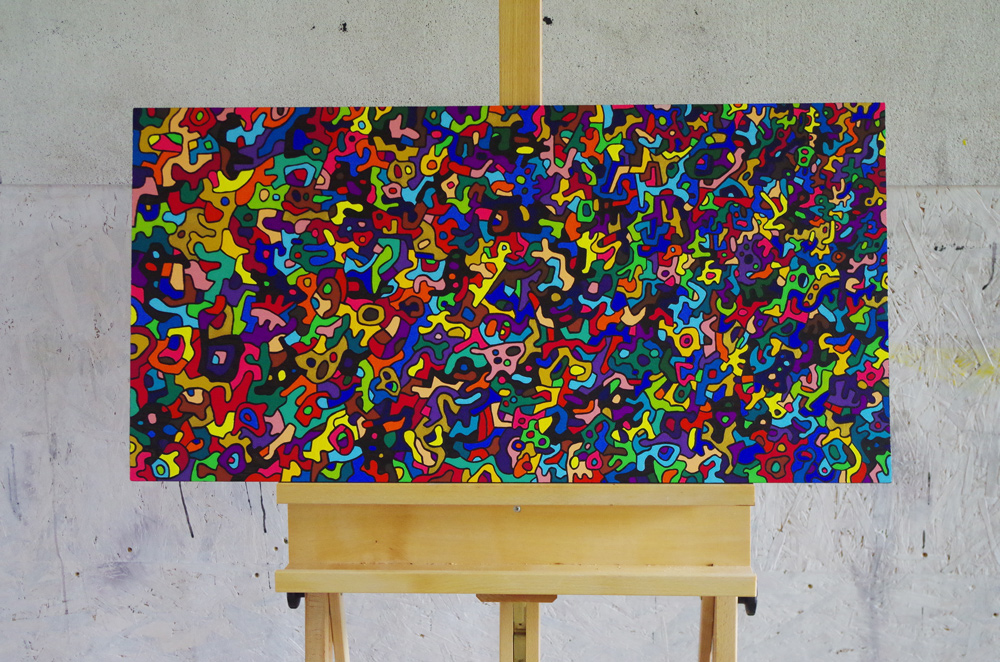
"Her letter only says "yes"."(彼女からの手紙には「Yes」とだけ書かれていた。)
完全なる情報はイマジネーションによって生まれる。
「脳」には、分からないことを嫌う性質がある。
描かれるのは「細胞」からイメージされる流動的なパターン。
「細胞」は生命の最小単位。
細分された情報から、全体は読み取れるのか。
全体から細部を知ることは可能なのか。
この作品は、好きな場所を自ら破り、持ち帰ることができる。
「情報」の集合としての「自己」の表現と完全な「情報」の不完全性の描写。
The perfect information is comes up from the imagination.
Brain has a nature not to like unknown things.
"Cellular" pattern is drawn on the paper.
"Cell" is the minimum unit of the Life.
Can we know everything from the detail?
Is it possible to know detail from whole world?
Viewers can tear work anywhere they want and take back.
This work express about "Self" from the point of view of "information".
Material / Japanese ink on Newspapers from Kronstadt, Saint Petersburg, Russia.
1200cm(472.4inch)×336cm(132.3inch), 930cm(366.1inch)×334cm(131.5inch)
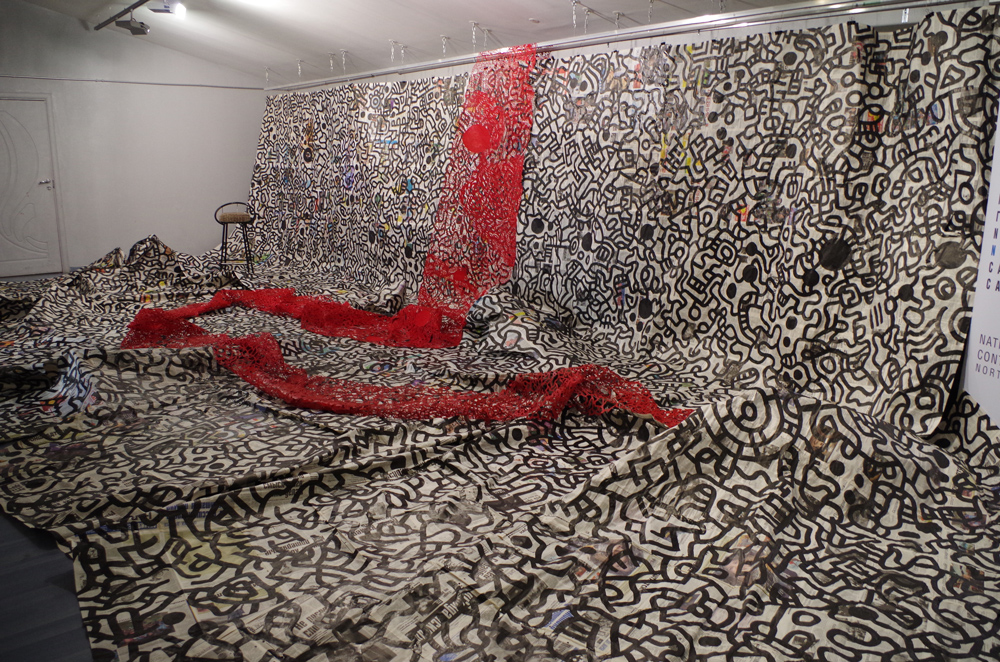
「Cellular - Work title is "What lets me live for." だから、わたしは生きている。」
ヒトには自由意志がないのではないか、という研究結果がある。
米国の生理学者、Benjamin Libet氏の研究により、ヒトが意識する約0.5~1秒前に、脳は行動を起こす準備を始めているということが明らかになった。
「動こう」とあなたが思う前に、すでに「動き」始めている。
もしも、本当に自由意志がないのだとしたら、私たちは生きることも死ぬことも、自らの意志とはかけ離れたところで決定されているということだろうか。
私たちは死を選ぶことができる。
選ばれた死は、私たちが自由に選んだものではないということか。
私たちは生を選ぶことができる。
選ばれた生は、私たちが自由に選んだものではないということか。
元獣医師というキャリアをもつOumaのアートのテーマは「治療の代替となるアートの探求」である。
モチーフとしているのは、生物学で生命の最小単位と定義される「細胞」である。
ヒトには「信じる」ことにより、自らを治癒する能力がある。
ただの小麦粉を新薬と確信することで、劇的な回復を見せることがある。
時に、手術を必要とする大きな怪我も、皮膚を切っただけの偽手術で完治することがある。
ならば、真に安全で効果的な治療とは何か。
なぜ、ヒトは自らの治癒力を自らの意志のみで生かせないのか。
たとえヒトに「自由意志」がなかったとしても、すべては自らの選択であり、自ら生きることを選んでいるのだと確信することはできないのか。
自らの脳を自ら騙すことはできるだろうか。
紙に刻まれたパターンは、自由意志などないかのように、全くの下書きなしに、自動的に生み出された。
ギャラリー内を1つの「細胞」として内包される1つの「細胞」のような作品。
この空間で、作品からの強固な圧力をあなたは全身で感じるだろう。
そして、この作品を、あなたは切り取って持ち帰ることができる。
白い部分、赤い部分、細かい模様が刻まれた部分、まっさらに近い部分。
あなたはなぜ、その部分を持ち帰ると選んだのだろうか。
それは、あなたの自由意志か。それとも何者かによって選ばされたのだろうか。
あなたの心臓と同じサイズに切り取られた「部分」は「意志とは何か」、あなたに問いかける。
※本作は握りこぶし大に一度だけ切り取ることができます。
作品を持ち帰りたい場合は10ユーロ。置いて帰る場合には、握りこぶし大の作品は壁に晒します。
飾られている他者の心臓サイズの作品を買い取ることもできます。
A study says we humans in fact are not endowed with free will.
The research by Dr. Benjamin Libet, an American physiologist, has revealed that our brains get ready to act approximately 0.5~1 second before we get aware of the action.
This means you “are acting” before you think of “acting” it.
If we really do not possess any free will, does that mean our living and dying is being decided by something that is beyond our wills?
Still, we seem to be capable of choosing our death.
Is even such a chosen death in fact not chosen by our discretion?
We are capable of selecting living and its way.
Is even such a selected life in fact not selected by our discreation?
The creative mission of Ouma, as a cell artist who was veterinarian, lies in to “artistic quest of alternative healing” with her art ingredient focused on “cell”, the biologically-defined minimum unit of life.
We humans have innate capacity to heal ourselves by “believing”.
Simply being convinced of mere flour as an effective medicine could bring about a dramatic cure (so-called placebo effect).
Occasionally mere cutting of a skin (placebo surgery) fully cures a serious injury.
These facts lead us to ask, “What are the safe and effective treatment?” in the true sense of the word.
And “Why cannot we activate our natural healing abilities by our own free will?”
Even if we had no “free will”, could not we get convinced that everything in life is made out of our own choice or that we are selecting the ways we live?
Could we deceive our own brains by ourselves?
The patterns we describe on paper are automatically made without their blueprints as if we had no free will.
A work of “cellular” art which comprehends the gallery as a monolithic “cell”.
You must feel with your entire body the consolidated pressure radiated from the work.
And you can bring it back home with you any favorite portion of your favorite:
White portion, red portion, exquisitely patterned portion, or even a blank portion. What lets you choose the portion as your part?: Is it your free will?; Or something else’s?
The “portion” , cut off of your choice in your heart-size, will ask you “what is your free will?”
「色の網」新潟オフィスアートストリート2016出展作
「世界を変える意志」2015.09
発したことすら忘れた言葉が、
誰かの一生の支えになっていること。
何気なく歩いたことが、
次の人のための確かな道になっていること。
存在しているだけで確実に与える世界への影響。
立ち位置を変えることで現れる知らなかった世界。
「世界を変える」とは何か。
それは自分が変わることか。
世界が変わることか。
世界と自分の関係性についての表現。
手術用メスで切り絵したインスタレーション。本個展では、展示品の設置方法を変えることで「生きる展示」としての表現を目指した。
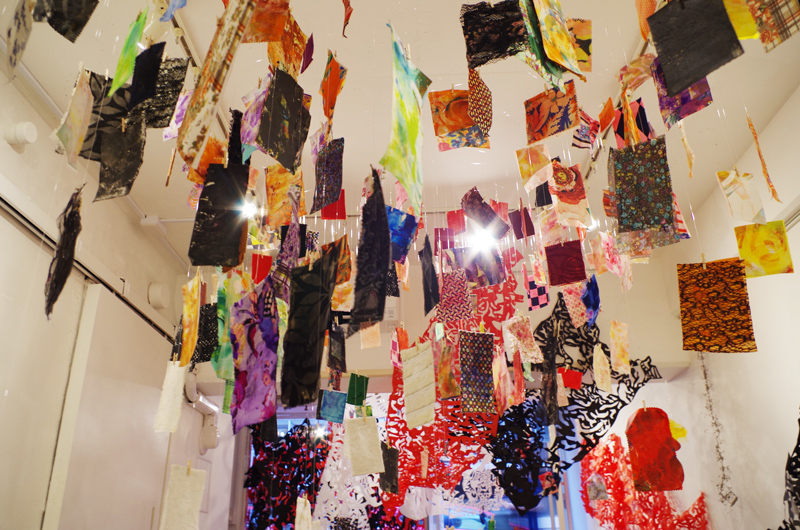
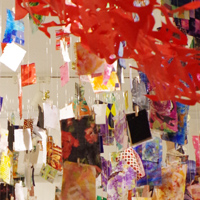
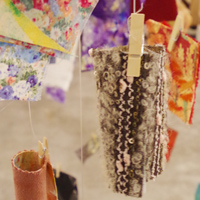
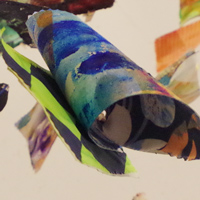
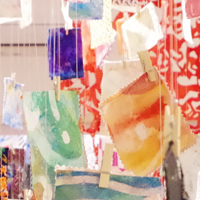
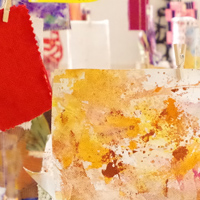
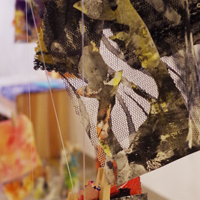
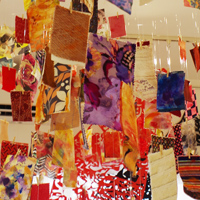
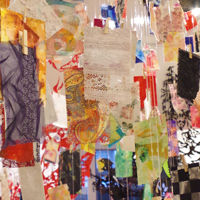
The WorldⅢ
Mixed Media, 2015
100×120×160㎝(39.4×47.2×63.0 inch)
Viewer can change the clothes.
吊るされた布を鑑賞者が好きな色の布と付け替えることができ、個展期間中に変化する作品。布は廃材。裏面に貼ったキャンバスはThe WorldⅡとして発表された作品を使用。発表時に鑑賞者によってカットされた切り目も残っている。
「五度目の大絶滅の後(After the Big Five)」2015.04
地球の歴史の中で五度の大絶滅を体験している地球。5つの時代を4つの壁面と天井から吊るされた5種類の素材も作風も違う作品で表現し、6度目の時代を床を歩く「鑑賞者」として見立てた作品。自然とヒトの在り方、選択がテーマ。
5つの時代はそれぞれ1.線画ドローイング、2.切り絵、3.アクリル+キャンバス地の量り売り作品(The WorldⅡ)、4.タイルにUVプリント、5.天井から吊り下げたインスタレーション(Death)によって表現された。
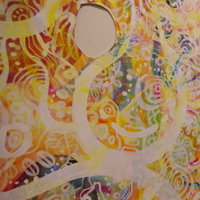
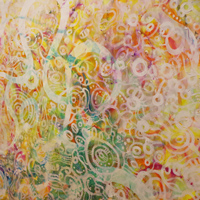
The WorldⅡ
Acrylic on Canvas, 2015
145.5×346㎝(57.3×136.2 inch)
会期中に鑑賞者が好きな場所を切れる作品。切り取って持ち帰る場合は量り売り。世界の中で自分を構成する成分の選択を促す作品。
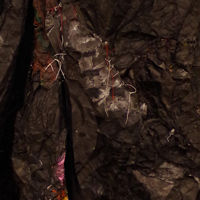
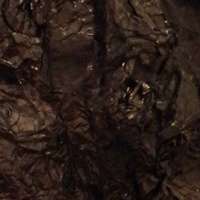
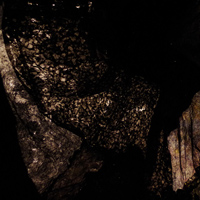
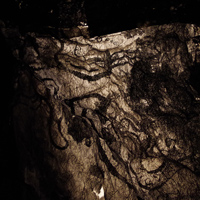
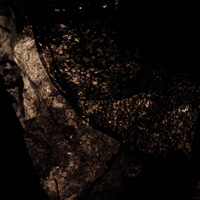
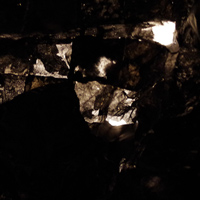
Death(死)
Japanese Ink and Acrylic with strings on Japanese paper, 2015
過去の作品を黒く塗って再構成した作品。内部に入れる体験型インスタレーション。(used past artworks)
150×178×250cm(59.1×70.1×98.4 inch)
Floating Being 2014.06
Japanese Ink and Acrylic on Japanese paper with Tap Talk (with Touch Lights Tech)
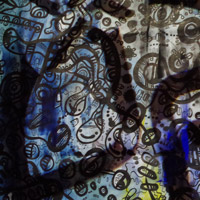
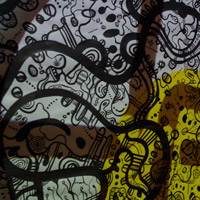


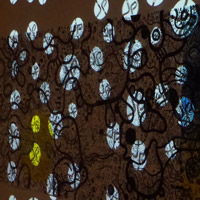
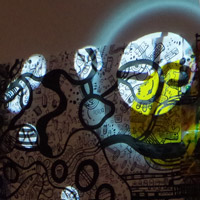
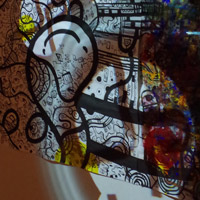
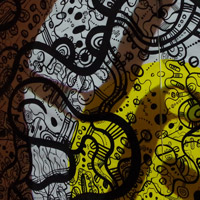
Self‐certification and Self-healing 2013.01
Japanese Ink on Japanese paper
the ceiling : 177cm×456cm, the floor : 358cm×567cm, the wallⅠ : 267cm×567cm, the wallⅡ : 267cm×523cm, the wallⅢ : 240cm×180cm, the wallⅣ : 267cm×340cm
UNAC TOKYO 2013
This was my first one woman gallery exhibition, in Tokyo last January.The artworks are Japanese ink on paper, covering four walls, floor and ceiling.Some pieces are placed as in a Japanese stone garden, allowing viewers to walk on the art work itself, and observe from the inside.
ギャラリー内部を絵で覆い尽くし、中から鑑賞する企画展。
京都の石庭のようにいくつかの細胞ピースを床に散らしており、鑑賞者の多くはそれを衣のようにまとったり布団のようにかけたりして自由に遊んでいた。
Works
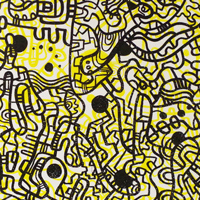
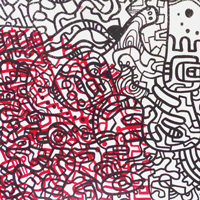
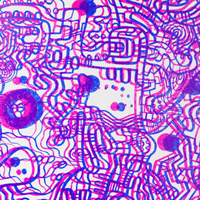
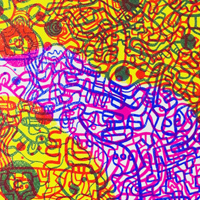
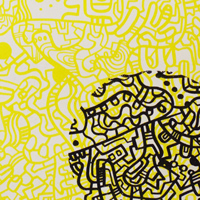
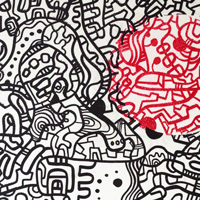
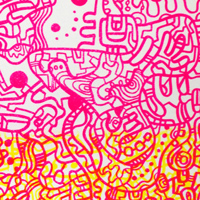
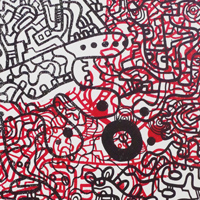
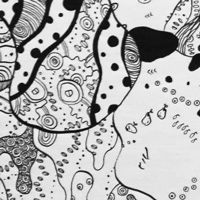


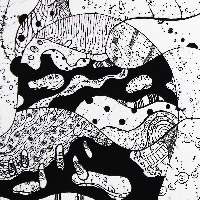
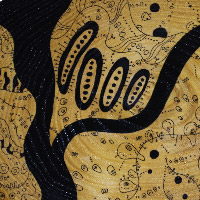
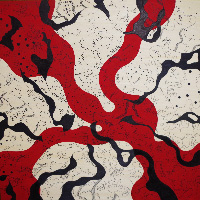
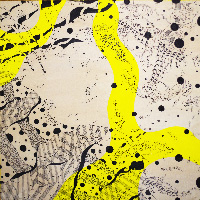
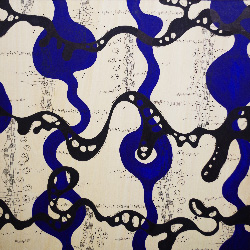
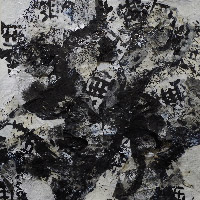
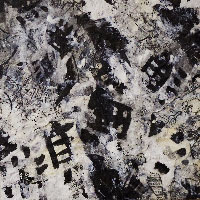
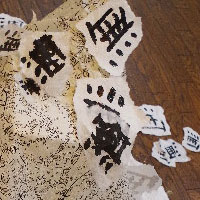
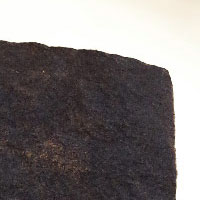
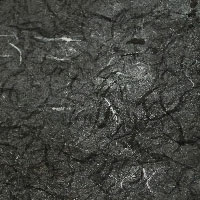
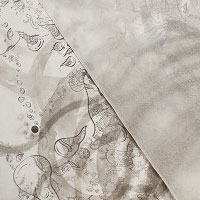
Cell Membrane(細胞膜)
180cm×60cm×60cm Japanse Ink and Fablic paint on Japanese paper 2013
In biology, life is composed of cells. This is an expression of a single cell amoeba.
One person can enter and see the cell from the inside; "One Life".
生命の基本最小単位「細胞」。膜で包まれた細胞内に1人で入って内側から鑑賞する作品。人が入ることで作品自体にリアルな生命を与える。
Wall Painting - Rebirth Cafe(生まれ変わりカフェ)
house paint on wall 2013
Fashionable Being Series
Japanese ink, bamboo, strings, Acrylic and metal clip on Japanese paper 2013
This is the expression of the living being, using parts from "Cell Membrane" and the other works.
All life is recycled. After death the atoms which make up individual life are returned to become other life. Everything is connected, all life is one.
「細胞膜」や「馬鹿の胆嚢」など別の作品の一部を切り出して作られたシリーズ。
すべての生命は循環し自然に還る。生物のつながりの表現。
また、使われている素材の順番を入れ替えることで、1つの作品を無限に楽しむことができる。
